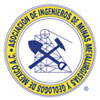Pipilita (Selenian Polybasite) a new mineral from the Guanajuato Silver-Gold Mining District,México
Por: L.F. Vassallo1,2, V.I. Starostin1
Abstract
A study of Ag-Au ores from the Guanajuato Mining District (México) has led to the discovery of a new mineral, a variation of Polybasite, which occurs associated with other silver-Selenian bearing minerals. The Selenian content of Pipilita (Selenian Polybasite) ranges from 0.17 to 12.69 %. With a decrease of 0.86-1.3 % of Se in Selenian Polybasite every 10 meters of depth, at San Nicolas and Bolañitos mines. The temperatures of fluid inclusions associated with the Selenian Polybasite minerals have a range from 230.6 to 253.4 °C. The name Pipilita is from El Pípila, a hero of Mexican Indepencence.
Introduction
At the turn of the XIX th century began the mineralogical study of the silver vein ores of the famous Guanajuato District, (Genth, 1891, 1892) Figure 1. However, the most significant contributions to the knowledge of the geological mapping and the paragenesis of Guanajuato ores have been made in recent years Figure 2. Among them are the studies of: Earley (1950), Wilson et al., (1950), Harris et al., (1965), Cepeda-Dávila (1967), Petruk and Owens (1974), Petruk et al., (1974), Vassallo and Borodaev (1982), Vassallo et al., (1982), Vassallo (1988), Frankenberg (1988), Resor (1989), Mango (1988, 1992), Mango et al., (1991), Vassallo et al., (1996), Orozco-Villaseñor (2014), and Vassallo (2018).
The silver sulphosalt aguilarite (Ag4SeS) was first identified in the ores of the Guanajuato Mining District (Genth, 1891, 1892). This mineral still is an important component of the ore that is mined today.
Earley (1950) reported a “brittle metallic mineral” associated with aguilarite from Guanajuato. Harris et al., (1965) considered that mineral as a seleniferous variety of the pearceite-polybasite series.
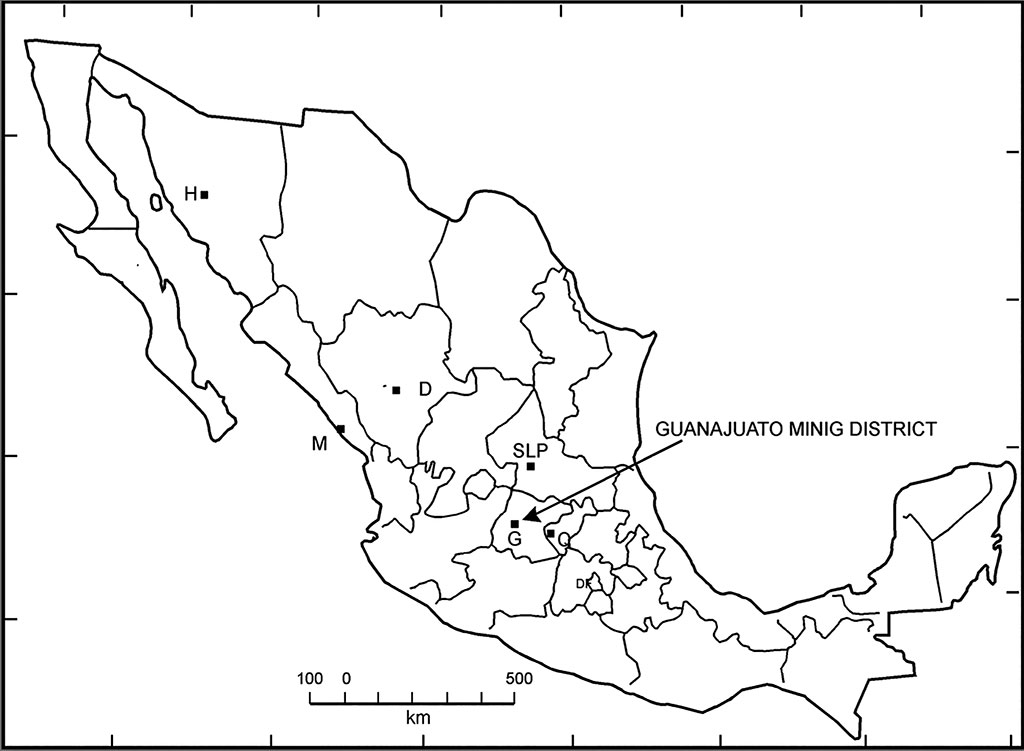
Petruk and Owens (1974), predicted an increase in Se content for the higher parts of Guanajuato´s lodes; our data confirms this because Selenian Polybasite has more Se at the higher parts of the bonanzas at the mines of Mina Bolañitos (La Luz vein system) 11.13 % and at veta San Nicolas 12.69 % of Mina El Cubo part of La Sierra vein system.
The higher parts of the veins develop a wide hydrothermal alteration area of argillitization (Vassallo et al., 1989) that are near the high Se contents.
Other studies have been done about Se-polybasite, Bindi et al., (2007a, 2007b) more recently. A new mineral has been named Selenian Polybasite to indicate that it is the Se- dominant analogue of polybasite.
Selenian Polybasite, ideally [(Ag,Cu)6(Sb,As)2(S,Se)7][Ag9Cu(S,Se)2Se2], is a new mineral species from the De Lamar mine, Owyhee County, Idaho, USA. They report Se content from 8.01 to 8.77 %. Bindi et al., (2007a).
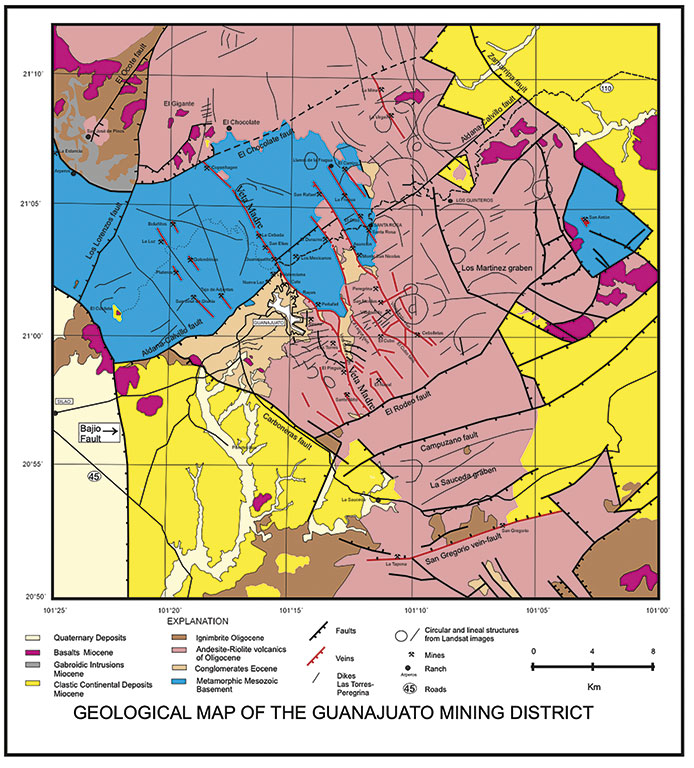
Márquez-Zavalía et al., 2008, report Se content from 2.03 to 8.42% from Se-bearing polybasite-Tac from the Martha mine, Macizo del Deseado, Santa Cruz, Argentina.
Description of the Pipilita-Selenian Polybasite minerals at Guanajuato:
For the most part Guanajuato´s ore minerals are microscopic. The silver-bearing minerals are extremely fine-grained, and are commonly semi-encapsulated in quartz or calcite. In some samples the Ag minerals are at the grain boundaries of other minerals. In other instances, the silver-bearing minerals are intergrown on a sub-micron scale. Mineragraphic studies are not sufficient to identified them properly, only with the help of electron microprobe was possible to study their exact chemical composition, (Vassallo and Borodaev, 1982, Vassallo, 1988).
Microprobe studies were carried out using a JEOL JSM-35C microprobe with attached EDS detector (Tracor Northern), and a JEOL JXA 5. Operation was at 20-25 kV with a beam diameter of approximately 1-3 µm. Pure metals and previous analyzed minerals were used as standards; the data are reproducible to ± 1 wt.%, and analyses of minerals were made on grains more than 10 µm in diameter. Type studied samples are deposited at Museo del Sistema Tierra-Mineralogía of the Centro de Geociencias of the UNAM. The Selenian Polybasite intergrows with aguilarite and naumannite are shown in plate No.1.
During the studies of the mineralogical composition of the ores of Guanajuato, was found that Selenium is present in several minerals, for example: in minerals of the acanthite- aguilarite-naumannite series, galena, native silver, and polybasite.
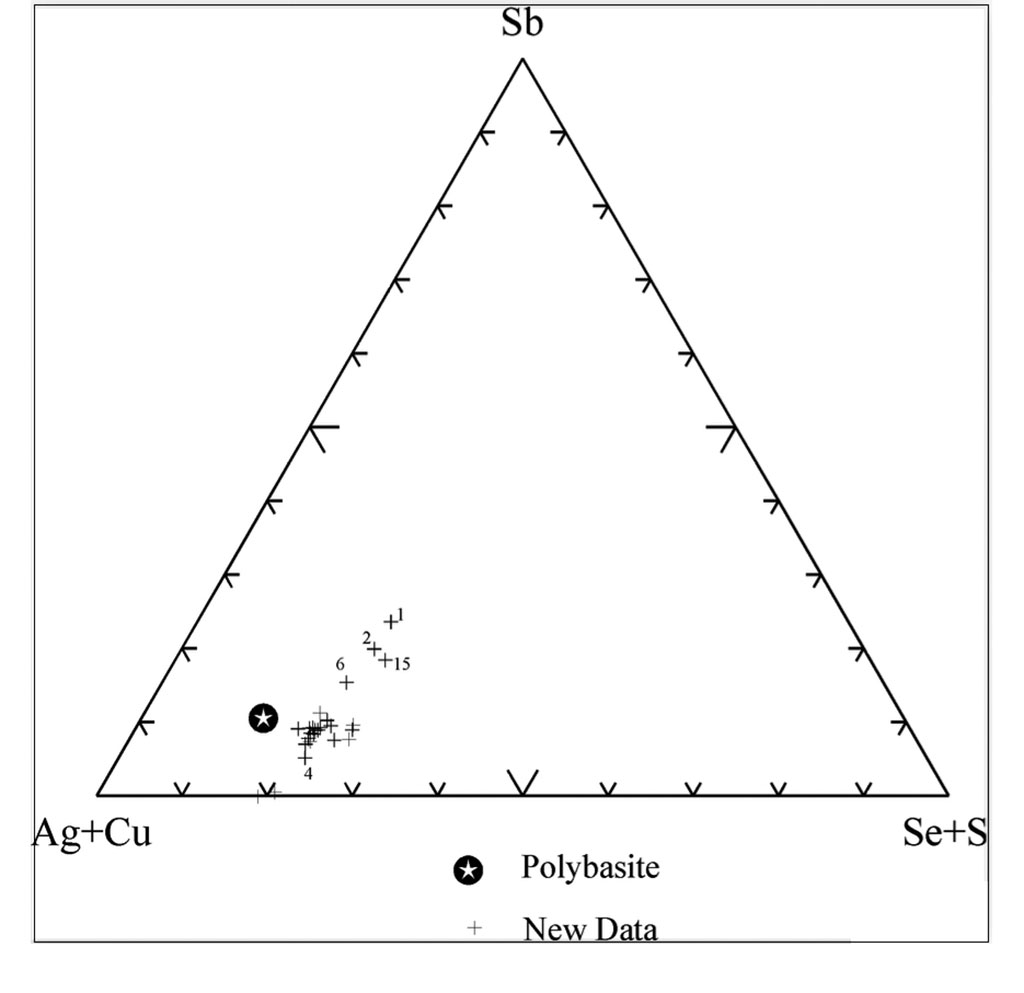
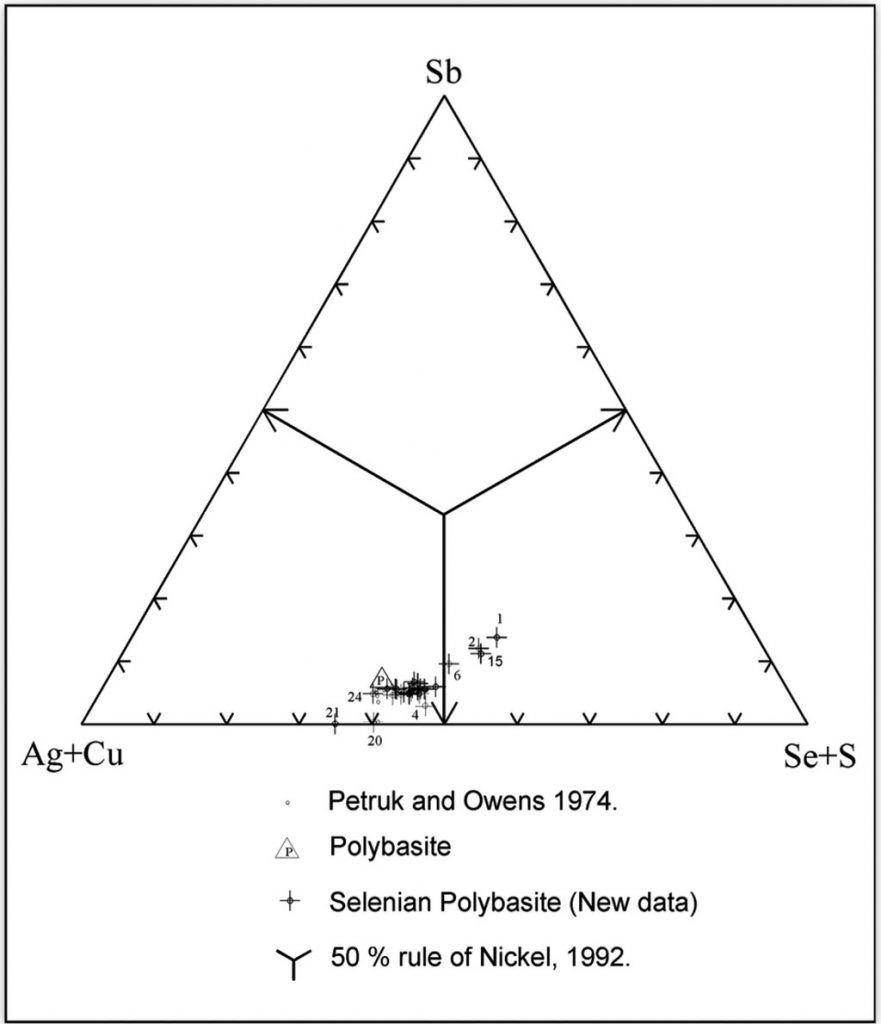
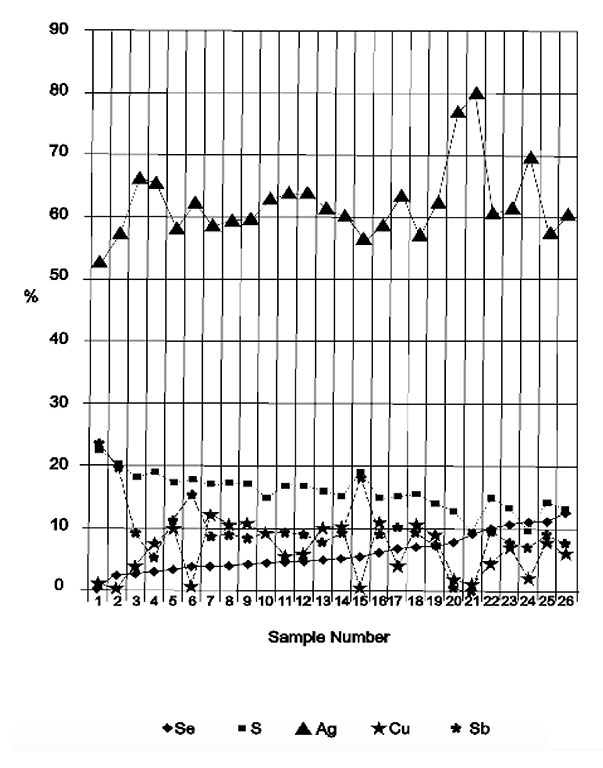
We found during our research a mineral like polybasite, with reflection around 30%; very low double reflection; gray-white with a green tone; very weak anisotropy; without internal reflections; micro-hardness near 100 kg/mm²; with a greater relief than argentite but lower than stephanite; its shape is allotriomorphic shape and sometimes is intergrown with minerals of acanthite-aguilarite-naumannite series; it is also associated with silver sulphosalts and with galena and sphalerite (Vassallo and Borodaev, 1982, Vassallo, 1988).
Twenty-six microanalyses (Table 1, Figures 3) were made of the mineral described. The Selenium content of the samples varies from 0.17 to 12.69 wt %, specimens with the highest Se content were collected near the top of the veins. The Selenian Polybasite was found at El Cubo Mine of La Sierra vein system, at La Cebada and Las Torres Mines of Veta Madre (Vassallo, 1988), and at Bolañitos Mine at the La Luz veins system, all of them at the Guanajuato Mining district. There was not arsenic content in minerals.
The formulas were calculated on the base of 29 atoms (Table 2), because its similarity with the mineral polybasite (Ag, Cu)16 Sb2 S11.
According to the “50 % rule” of ternary solid-solution series (Nickel, 1992), the analyzed minerals (Figure 4) cross the 50% boundary but the scatter of points is small although we can consider a solid-solution series between Polybasite and Selenian Polybasite as the scan studies showed (Plate 1).
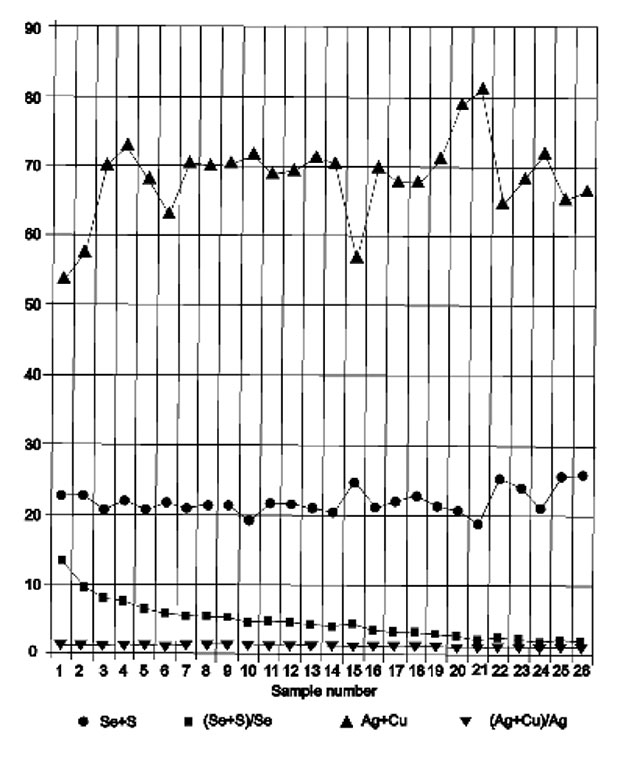
X-ray study is usually required to establish the true crystal system, symmetry, space group and precise unit-cell constants, as is stated by Dunn (1977), but in our case the analyzed minerals are very difficult to separate because they are very fine grained (20-30 micras) and the silver mineralization is very scattered. Therefore, any formula must be tentative until the crystal structure is determined, as is stated by Dunn (1977). More research about the definition of these mineral variations is needed at the new parts of the ore deposits of Guanajuato to define their detailed chemical trends.
The calculated formulas for the analyzed samples range between: (Table 2). Depending on the Se content of polybasite.
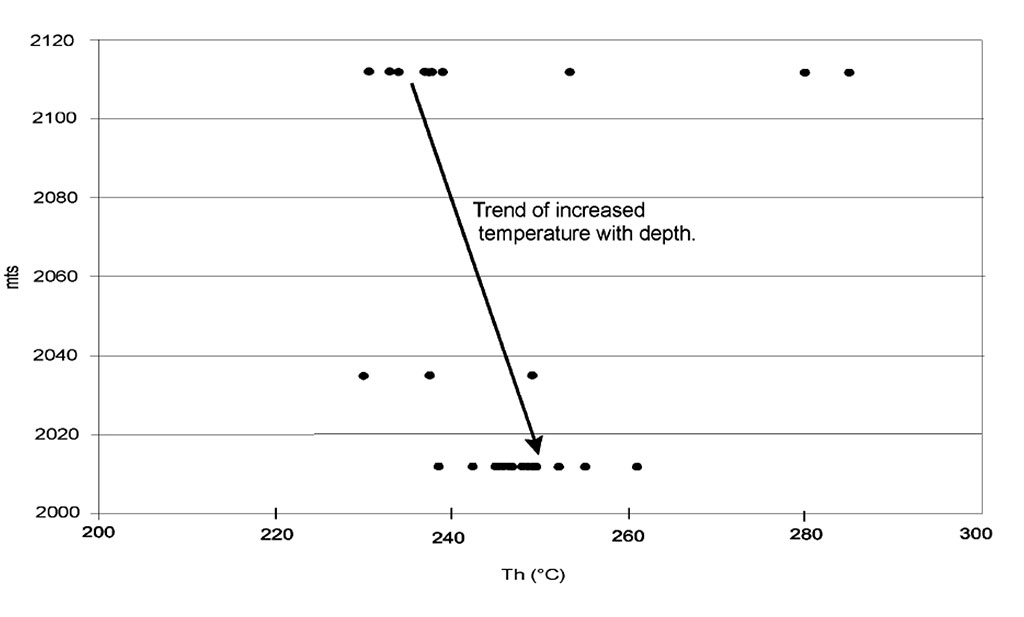
(Ag 10.10 Cu 0.31) 10.41 Sb 4 (Se 0.04 S 14.55) 14.59
and
(Ag 12.58 Cu 2.22) 14.7 Sb 1.41 (Se 3.61 S 9.18) 12.79
Figure 5 shows the trends of Se and Ag, increasing the values at the tops of the veins; whereas S and Sb decrease at the tops relatively. Figure 6 shows the value (Se+S) conserves constantly, with an upping trend at the tops, the value (Se+S)/Se shows the increasing amount of Se at the top, whereas (Ag+Cu)/Ag conserves almost the same.
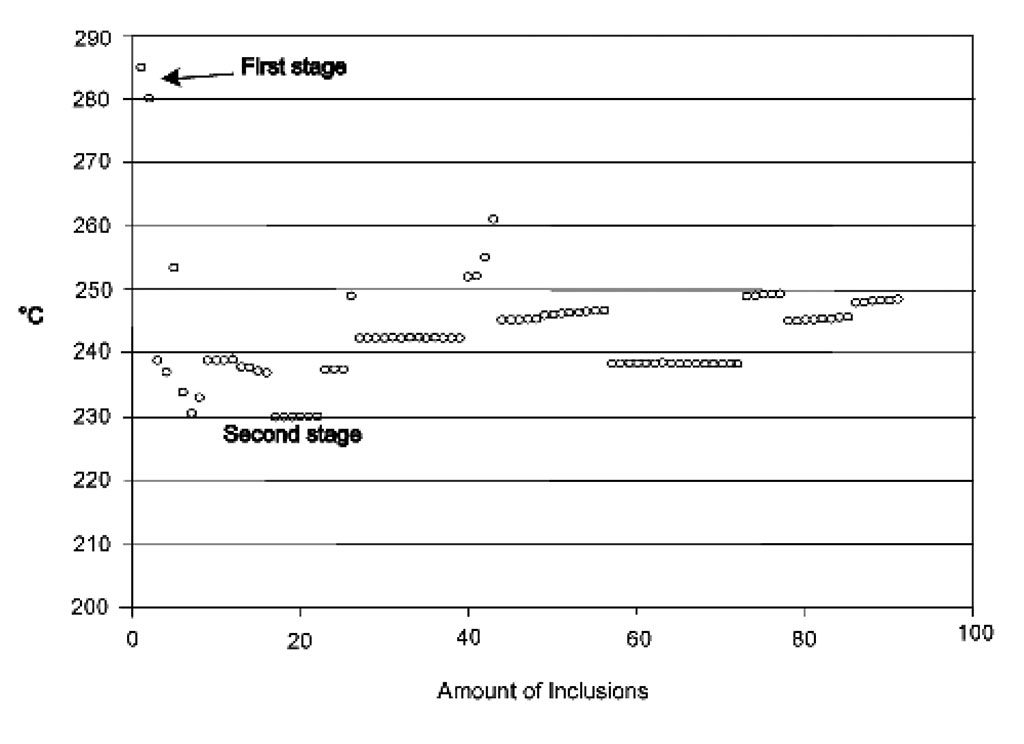
Figure 8.- Fluid inclusion temperatures of homogenization Th°C plotted against amount of inclusions in terms of the first and second stages of mineralization.
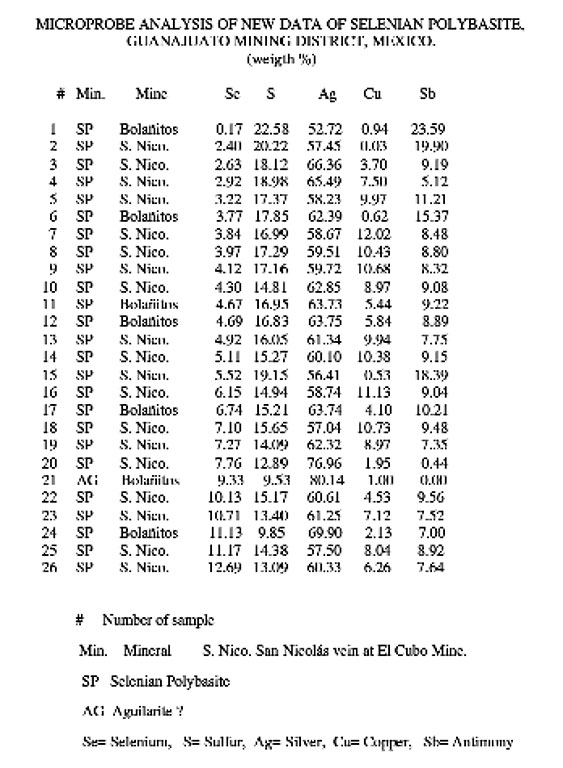
Table 1.- Microprobe analysis of new data of Selenian Polybasite, at Guanajuato Mining District, México, (weight %).
Fluid inclusions associated with the Selenian Polybasite
Fluid inclusions in quartz from several levels of the mentioned mines were studied. Only we took in account the inclusions very near the silver metallic minerals, most them are Selenian Polybasite. The quartz exhibits distinct growth banding, caused by several stages off mineralization. The microthermometric measurements were performed on inclusions down to a size of 2.5 µm in length, of two stages of mineralization, the principal silver- Selenian mineralization is the second.
Temperature determinations were made using an air flow heating stages at the Centro de Geociencias, UNAM, and at Lomonosov Moscow State University. The fluid inclusion observed and analyzed had variable relations of gas-liquid. Varying from gas-liquid (20-80 to 30-70) the first stage to (10-90 to 30-70) the second silver-Selenian stage, determined visually. It means that the liquid/gas ratio varies from 4 to 9 from the first to the second stages of mineralization. The first stage of quartz-mineralization was set at 280-285 °C.
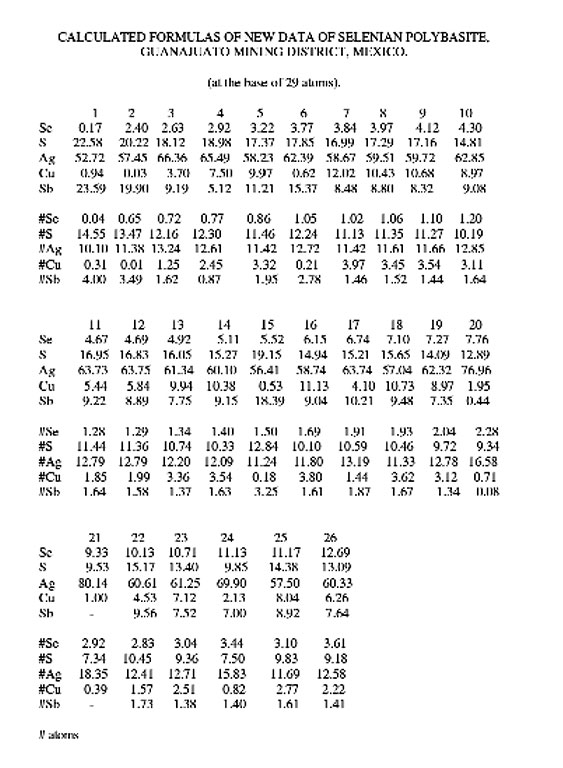
Figure 7 shows the results of heating analyses, plotted against height above sea level. There is a trend of increased temperature with depth, with a gradient of approximately 15 °C/100 m. Mango et al. (1991), fixed a gradient of approximately 10°C/100 m. at Rayas mine and took an average temperature of homogenization of 268°C. These higher values were considered taken in account of the so called deep ores of Guanajuato, that have Cu-Pb-Zn mineralization and are higher in temperatures, considered by Vassallo (1988), as the first stage of polymetallic mineralization at the whole Guanajuato Mining District. Resor (1989), using data from the literature and quantitative data of thermochemical analysis, has given electrum-sphalerite-pyrite-argentite temperature, averaging 223°C, as well as fluid inclusion temperatures averaging 240°C.
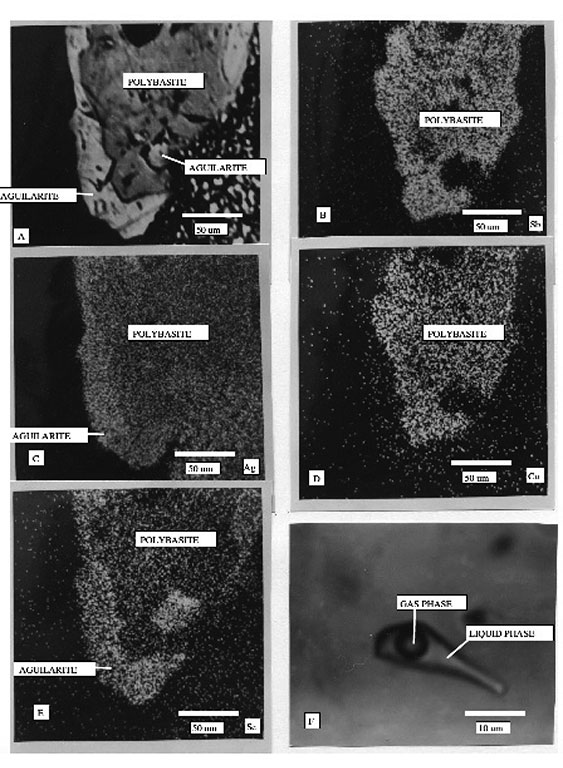
Albinson et al., 2001, give a range from 200 to 300 °C, after references of Buchanan, (1981), Mango et al., (1991) and Randall and Saldaña (1994).
Our data reveals that ninety percent of the analyzed fluid inclusions Figure 8, homogenize at temperatures between 230° and 255 °C. The average temperature of homogenization (Th) of the second (principal silver mineralization) stage is 242.2 °C. The temperatures associated with the Selenian Polybasite minerals have a range from 230.6 to
253.4 °C.
Conclusions
Selenian is a broad distributed element in the Guanajuato Mining District (Mexico). Selenian Polybasite occurs associated with other silver-Selenian bearing minerals. The Se content of Selenian Polybasite ranges from 0.17 to 12.69 %, with a decrease of 0.86 – 1.3 % of Se every 10 meters of depth, at San Nicolas and Bolañitos mines. The temperatures associated with the Selenian Polybasite minerals have a range from 230.6 to 253.4 °C. There is a trend of increased temperature with depth, with a gradient of approximately 15 °C /100 m.
Acknowledgements
This study would not have been possible without cooperation from Grupo Peñoles former owners of Mina Bolañitos. I am particularly grateful to Ing. Juan M. Raya of El Cubo mine. Dr. Viktor Starostin and the staff of Department of Geology, Geochemistry and Economics of Mineral Deposits of the Geological Faculty of Lomonosov Moscow State University were all extremely generous in allowing access to their laboratories. Juan Tomas Vázquez of CeGeo-UNAM, helped in many ways. CONACYT-32511T, and Lomonosov Moscow State University provided all financial assistance and are gratefully acknowledged.
References
- Albinson, T., Norman, D. I., Cole, D., Chomiak, B., (2001) Controls on Formation of Low- Sulfidation Epithermal Deposits in Mexico: Constrains from Fluid Inclusion and Stable Isotope Data. Society of Economic Geologists Special Publication 8, 1-32.
- Bindi, L., Evain, M., Manchetti, S. (2007a) Selenian Polybasite, [(Ag,Cu)6(Sb,As)2(S,Se)7][Ag9Cu(S,Se)2Se2], a new member of the Pearceite- Polybasite group from the De Lamar Mine, Owyhee county, Idaho, USA. The Canadian Mineralogist, 45, 1525-1528.
- Bindi, L., Evain, M., Spry, P.G., Manchetti, S. (2007b) The pearceite-polybasite group of minerals: Crystal chemistry and new nomenclature rules. American Mineralogist, 92, 918–925.
- Buchanan, L.J. (1981) Precious metal deposits associated with volcanic environments in the Southwest: Arizona Geological Society Digest, v. XIV, 237-262.
- Cepeda-Dávila, L.J. (1967) Estudio petrológico y mineralógico de la región de El Cubo, Municipio de Guanajuato, Gto.: Boletín de la Asociación Mexicana de Geólogos Petroleros, 19, 39-107.
- Dunn, P.J. (1977) From unknown to known. The characterization of new mineral species.Mineralogical Record, 8, 341-349.
- Earley, J.W. (1950) Description and synthesis of the selenide minerals. American Mineralogist, 35, 337-364. (in Harris et al. 1965).
- Frankenberg, E. (1988) A detailed mineralogical description of “Deep” ore in the Rayas mine, Guanajuato, Mexico, Unpub. Senior Honors Thesis, Dartmouth College, 53 p.
- Genth, F.A. (1891) Contributions to mineralogy, American Journal of Science, 141, p. 401.(1892) Contributions to mineralogy, American Journal of Science, 144, p. 381.
- Harris, D.C., Nuffield, E.W. and Frohberg, M.H. (1965) Studies of mineral sulphosalts: XIX- Selenian Polybasite. Canadian Mineralogist, 8, 172-184.
- Mango, H. (1988) A fluid inclusion and isotopic study of the Las Rayas Ag-Au-Pb-Cu mine, Unpub. M.S. thesis, Dartmouth College, 109 p.
- Mango, H. (1992) Origin of Epithermal Ag-Au-Cu-Pb-Zn Mineralization on the Veta Madre, Guanajuato, Mexico. Ph.D. Dissertation, Dartmouth College, 201 p.
- Mango, H., Zantop, H., and Oreskes, N. (1991) A fluid inclusion and isotope study of the Rayas Ag-Au-Cu-Pb-Zn mine, Guanajuato, Mexico, Economic Geology, 86, 1554-1561.
- Márquez-Zavalía, M.F., Bindi, L., Márquez, M., Manchetti, S. (2008) Se-bearing polybasite- Tac from the Martha mine, Macizo del Deseado, Santa Cruz, Argentina. Miner Petrol 94, 145–150.
- Nickel, E.H. (1992) Solid solutions in mineral nomenclature. Canadian Mineralogist, vol. 30, 231-234.
- Orozco Villaseñor, F.J. (2014) Mineralogía y génesis del clavo de Rayas de la zona central de la Veta Madre de Guanajuato, PhD. Tesis, Posgrado de C. Tierra, UNAM, 228p.
- Petruk, W., and Owens, D.R. (1974) Some mineralogical characteristics of the silver deposits in the Guanajuato mining district, Mexico: Economic Geology, 69, 1078-1085.
- Petruk, W., Owens, D.R., Stewart, J.M., and Murray, E.J. (1974) Observations on acanthite, aguilarite and naumannite: Canadian Mineralogist, 12, 365-369.
- Randall, J.R., and Saldaña, E.A. (1994) Exploration in a volcano-plutonic center at Guanajuato, Mexico: Economic Geology, 86, 1554-1561.
- Resor, P. (1989) Analysis of the mineral composition and chemical variations in ore forming fluids of the Peregrina and El Cubo mines, Guanajuato, Mexico, Unpub. Senior Honors Thesis, Dartmouth College, 60 p.
- Vassallo, L.F. (1988) Características de la Composición Mineralógica de las Menas de la Veta Madre de Guanajuato. Revista Mexicana de Ciencias Geológicas, 7, (2), 232-243.
- Vassallo, L.F. (2018) Regional Geological setting of Guanajuato silver-gold deposits and quantitative petrophysical assessment of their hydrothermal alteration, Guanajuato, México, Ore Geology Reviews 101, 502-519. https://doi.org/10.1016/j.oregeorev.2018.07.022
- Vassallo, L.F., and Borodaev, Yu.S. (1982) Novie dannie o mineralax riada akantit-aguilarit- naumannit: Moscú, Doklady, Akademii Nauk SSSR, t. 264, (3), 685-688. (in Russian).
- Vassallo, L.F., Starostin, V.I., Borodaev, Yu. S. (1982) Strukturno-Petrofizicheskii Kontrol Orudeneniya na Serebriano-zolotom Mestoroshdenii Guanajuato v Meksike (en ruso). “Control estructural-petrofísico de la mineralización en el Depósito argento-aurífero Guanajuato, México”. En la revista científica “Geología de Depósitos Metálicos” de la Academia de Ciencias de la URSS, 1982. Tomo XXIV, No. 2, p. 20-28.
- Vassallo, L.F., Olmos, J., Villaseñor, M.G., Girón, P. y Lozano, A. (1989) Alteraciones Hidrotermales de las Rocas Encajonantes de la Parte Central de la Veta Madre de Guanajuato, Gto., México, (Características Petrofísicas y Químicas). Revista Mexicana de Ciencias Geológicas, 8, (2), 211-222.
- Vassallo, L.F., Martínez-Reyes, J. and Paris, J.P. (1996) Estructuras Circulares y Lineales en el Distrito Minero de Guanajuato, Gto. México y su Significado en la Prospección Minera, Revista Mexicana de Ciencias Geológicas. 13, (2), 252-257, (accepted and published in 1997).
- Wilson, I.F., Milton, Ch., and Houston, J.R. (1950) A mineralogical study of the Guanajuato, Mexico, silver-gold ores: U.S. Geological Survey, Open File Report 70-75, 70p.
- Dep. of Geology, Geochemistry and Economic of Mineral Deposits, Geology Faculty, Lomonosov Moscow State University, GSP-1, Leninskie Gory, Moscow, 119991, Russian Federation. zoloto2009@yahoo.ca, star@geol.msu.ru
- Centro de Geociencias, UNAM, Campus Juriquilla, A.P. 1-742, Queretaro, Qro. 76000, MEXICO. vassallo@unam.mx


